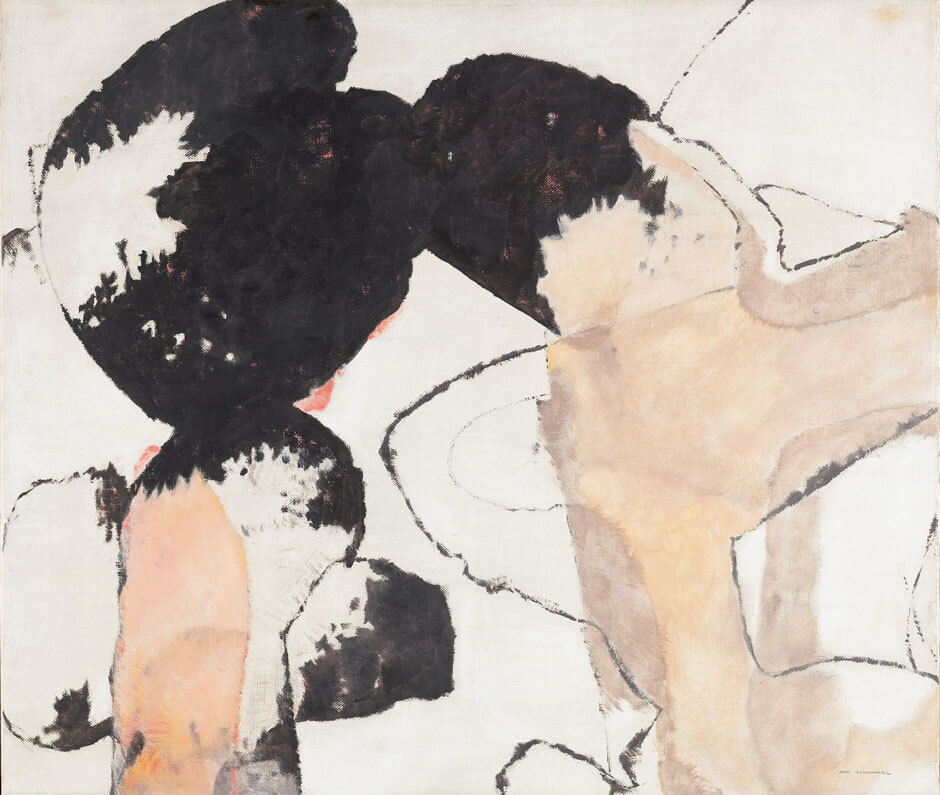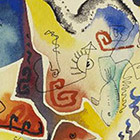Far Off Drums 1960

Jock Macdonald, Far Off Drums, 1960
Oil and Lucite 44 on canvas, 91.3 x 106.6 cm
National Gallery of Canada, Ottawa
In Far Off Drums, an exquisite painting that is both vital and harmonious, Macdonald resolved the crucial issue of space and the relation between figure and ground. It transcends its own material reality to echo the life of the spirit that for years he had sought to portray. Macdonald completed this work about a year before he died, and it resonates with the melancholy knowledge that his dream of having years dedicated to painting once he retired from teaching would not be fulfilled.
Macdonald uses painterly line as a structuring element to contain thinly applied areas of colour. His line is as classically elegant here as that of the Italian painter Duccio (c. 1255–1319): it flows gracefully on an open ground as light permeates the composition, and materiality, or form, is suggested only in the delicately coloured areas. Line itself is ethereal. Macdonald no longer relies on the heavy and structural underpinning or applied surface design he had used in the modalities, or the decorative embellishments of his automatics. Rather, the elements here are fluid, and there is a finely balanced tension between line and the thinly painted surface.
Macdonald included this painting in his solo exhibition at the Here and Now Gallery in Toronto, in January 1960. He followed his usual custom of titling it just before it went on show. In the biographical sketch he wrote for the gallery, he stated: “An artist must seek to discover new forms of beauty. If not an arrestment occurs and art becomes a superfluous aestheticism.” True artists, he felt, can find themselves at one with the cosmic order of nature.
Macdonald hoped that his students would create “twentieth-century masterpieces.” In paintings such as Far Off Drums, the teacher fulfilled in his own work the destiny he desired for his students.

 About the Author
About the Author
 More Online Art Books
More Online Art Books
 Acknowledgements
Acknowledgements